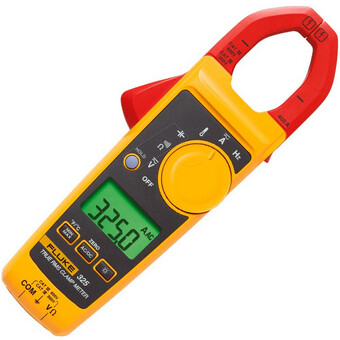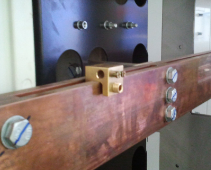Hi everyone. I’m new to econCMS, OpenEnergyMonitor hardware and this forum. I’m here to get get some help with the initial setup and then hopefully help with maintaining the documentation.
I want to focus on the problems I’m having first, because I either need to get them worked out, or return the hardware within the next 11 days.
What I’m trying to do
I want to monitor energy usage on all the circuits in my house. I currently have 25 breakers in my main panel and a couple sub-panels, and given the cost and complexity, I decided that I’m just going to try to monitor 18 circuits instead.
My motivation here is to see if we have some phantom loads because we’re using a lot of power and we can’t account for it with kill-a-watt meters and the built-in energy metering with our HVAC. We can always move CTs around after collecting some data, so 18 CTs should be fine.
Background about me
First, I’m in the USA. I have the typical American 120/240V @ 60Hz. I do not have any 3-phase power.
- Programmed arduinos, including non-toy projects that used LoRa radios and are deployed in the field
- Learned PHP in either the 90s or early 00s and have kept up with all their object oriented changes
- Python is my jam
- Javascript isn’t my favorite, but I have plenty of experience there
- Linux is pretty much the only operating system I have used for years
- Worked with lots of Raspberry Pi boards, including using the GPIO and I2C
- Had a few years of schooling in analog electronics in the 90s, so I’m familiar with the basics
- Have an open source thermostat, so I’m pretty familiar with US HVAC systems at this point
- Kinda an open source fanatic, which is why this system was my first choice
For now, I just want to monitor my power usage. I don’t want to spend hours diving into the code, setting up additional in-house servers, writing documentation, or experimenting to try to figure out what works. I may want to do that in the future, but for now I’m just trying to determine if I can make this hardware and software work for me.
What hardware I have
- emonPi2
- Raspberry Pi 4b
- emonVS UK 1-phase (yes, I ordered the wrong plug)
- emonTx5
- emonVS 3 phase North American split phase, no plug (yes, I ordered the wrong power supply because I saw North American and thought it was talking about the plug, not reading closely enough to see it was 3-phase)
- Many CT sensors ranging from 20-100A
My main misunderstanding was that I thought I was going to be able to power the Tx5 over USB. I believed that since Raspberry Pi boards use 5V DC, and USB can provide the same, it’d just pass through. It was only after I got the hardware that I realized that it’s AC that’s going into the devices. As such, I intentionally ordered one without a plug, thinking that meant without a power supply. Oops.
I don’t know how I managed to order one with a UK plug. That wasn’t a misunderstanding but just a mistake on my part.
In the end, I don’t think any of this was a big deal, other than paying for extra component to be populated in the 3-phase power supply. I have plenty of power cables lying around, so I just opened up the emonVS units and wired in my plugs. Hopefully having the 3-phase thing doesn’t come back to bite me and if so, maybe I can remove a couple components and make it appear like a single phase power supply, if that’s necessary.
Hardware configuration
The emonPi2 and emonTx5 both have a emonVS is plugged into them, they’re connected via a USB-C cable, and I’m using ethernet for accessing the system over the LAN.
The current problem
The EmonTx5 is reading all zeros for all Pn and En values.
The emonPi2 seems to be working as expected and when I turned on the stove, I saw the P1 value shoot up to around 2500. So everything there seems to be good over there.
On the inputs page, all inputs for the emonPi2 and emonTx4 (the hardware is a 5, but it shows up as a 4 in the software) are green with the exception of V2 and V3 for the EmonPi2 (which are NULL). The Tx5 is reading a value for Vrms1 and tiny values for Vrms2 and Vrms3 (like 1.5-2V which I expect is just noise). In contrast, the emonPi2 has NULL values for V2 and V3. I’m guessing it’s because the components are missing from the power supply, but it might be some software setting that I don’t know about.
I thought maybe the device was detecting that I’m using a 3-phase power supply and might have switched into some other mode, so I tried switching power supplies. After doing so, the EmonPi2 still had NULL values and the Tx5 still had small values for Vrms2 and 3.
I’m not even sure what my questions are at this point, other than:
- How do I get power measurements from the Tx5?
- Are the power supplies causing these problems?
Why I think I might be in over my head
I thought I was going to clip on some ammeters, plug the pi into ethernet and power and be done. I’d be able to see all the power usage, have graphs, daily/weekly/month usage views and so forth.
After realizing that wasn’t the case, I see posts like Newbie from US and thing “yes, that’d perfect! They’ll probably have the same basic questions and I can spare people from answering them again”. Then I read the first paragraph of that post and realized that it was way more advanced than my “measure amps” use case.
I also never saw any explanation as to what P1-6 and E1-6 are in the documentation. Eventually I found a post that asked a similar question and the answer never said that “energy” is in kWh and “power” is in W, but it expected everyone to just know that somehow. In America, we use power usage and energy usage interchangeably. I thought maybe this is some terminology that electricians use, and I remembered seeing http://www.electropedia.org/ in the FAQ, so I looked up energy (hxxps://www.electropedia.org/iev/iev.nsf/display?openform&ievref=113-03-45) there and it says “Specific energy, or energy per mass, is denoted e or w.” To me that says that energy is measured in W, not Wh.
So even when I see these commonly used words and I kinda get the feeling that they might be used in a special way here, and I look them up in the source suggested, I still feel like I’m still struggling to get on the same page as the other people here on this forum. I was able to confirm my understanding in this case from the back and forth in the thread and running some tests on my local system, but if everything I try to do with this is going to take hours and hours of reading, I’m not sure this is the right system for me.
What I’m interested in doing later, maybe
If I keep this hardware, I want to update the documentation to help out people getting started who want a very simple system. I’m in a good position to do this because the problems I’m running into are not the same as the problems experts putting together a custom system are going to experience. I’m the one with the perspective of not just knowing that P1 is power in W and E1 is Energy in Wh without ever being told this. I know where I looked to find answers and didn’t find them. So as long as I can figure out the answers, I can put a link to them where I did look. In summary, I seem like an ideal person for the task at hand.
I also have PV, two ground source heat pumps, and am in the process of getting a whole-house battery backup system. So I feel like there’s a lot of really cool things that I could be monitoring.
When I looked at the Heat pump monitoring bundle, it asked about plumbing fittings and the diagram looked like it was going to require cutting open the coolant lines to measure flow rates. That’s way more invasive than I’m willing to take on. My PV inverters are SolarEdge, and batteries are LG, all of which have RS485 on them, so I feel like there are some opportunities there. The heat pumps are WaterFurnace and they have RS485 on them, use ModBus, and I saw someone has already reversed most of the protocol.
All of this is interesting, but not something I want to take on now, and certainly not within the 11 days that I have to either return the product or commit to it.

